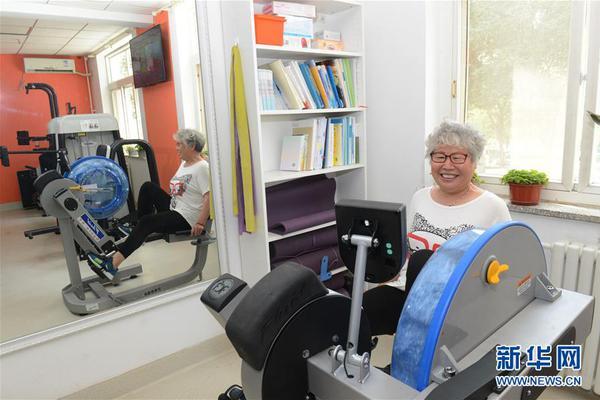【how long are cooked tamales good for in the fridge】Is There An Opportunity With Simpson Manufacturing Co., Inc.’s (NYSE:SSD) 27.64% Undervaluation?
Does the January share price for Simpson Manufacturing Co.,how long are cooked tamales good for in the fridge Inc. (
NYSE:SSD

) reflect it’s really worth? Today, I will calculate the stock’s intrinsic value by estimating the company’s future cash flows and discounting them to their present value. I will be using the Discounted Cash Flows (DCF) model. Don’t get put off by the jargon, the math behind it is actually quite straightforward. If you want to learn more about discounted cash flow, the basis for my calcs can be read in detail in the

Simply Wall St analysis model

. If you are reading this and its not January 2019 then I highly recommend you check out the latest calculation for Simpson Manufacturing by following the link below.
See our latest analysis for Simpson Manufacturing
What’s the value?
I’m using the 2-stage growth model, which simply means we take in account two stages of company’s growth. In the initial period the company may have a higher growth rate and the second stage is usually assumed to have perpetual stable growth rate. To start off with we need to estimate the next five years of cash flows. For this I used the consensus of the analysts covering the stock, as you can see below. The sum of these cash flows is then discounted to today’s value.
5-year cash flow estimate
2019
2020
2021
2022
2023
Levered FCF ($, Millions)
$195.55
$248.10
$269.25
$292.21
$317.12
Source
Analyst x2
Analyst x1
Est @ 8.53%
Est @ 8.53%
Est @ 8.53%
Present Value Discounted @ 10.88%
$176.37
$201.82
$197.54
$193.35
$189.25
Present Value of 5-year Cash Flow (PVCF)
= US$958m
After calculating the present value of future cash flows in the intial 5-year period we need to calculate the Terminal Value, which accounts for all the future cash flows beyond the first stage. The Gordon Growth formula is used to calculate Terminal Value at an annual growth rate equal to the 10-year government bond rate of 2.9%. We discount this to today’s value at a cost of equity of 10.9%.
Terminal Value (TV)
= FCF
2023
× (1 + g) ÷ (r – g) = US$317m × (1 + 2.9%) ÷ (10.9% – 2.9%) = US$4.1b
Present Value of Terminal Value (PVTV)
= TV / (1 + r)
5
= US$4.1b ÷ ( 1 + 10.9%)
5
= US$2.5b
The total value is the sum of cash flows for the next five years and the discounted terminal value, which results in the Total Equity Value, which in this case is US$3.4b. In the final step we divide the equity value by the number of shares outstanding. If the stock is an depositary receipt (represents a specified number of shares in a foreign corporation) or ADR then we use the equivalent number.
This results in an intrinsic value of $74.32
. Compared to the current share price of $53.78, the stock is about right, perhaps slightly undervalued at a 28% discount to what it is available for right now.
Story continues
NYSE:SSD Intrinsic Value Export January 1st 19
Important assumptions
Now the most important inputs to a discounted cash flow are the discount rate, and of course, the actual cash flows. If you don’t agree with my result, have a go at the calculation yourself and play with the assumptions. Because we are looking at Simpson Manufacturing as potential shareholders, the cost of equity is used as the discount rate, rather than the cost of capital (or weighed average cost of capital, WACC) which accounts for debt. In this calculation I’ve used 10.9%, which is based on a levered beta of 1.124. This is derived from the Bottom-Up Beta method based on comparable companies, with an imposed limit between 0.8 and 2.0, which is a reasonable range for a stable business.
Next Steps:
Whilst important, DCF calculation shouldn’t be the only metric you look at when researching a company. What is the reason for the share price to differ from the intrinsic value? For SSD, I’ve compiled three important aspects you should further research:
Financial Health
: Does SSD have a healthy balance sheet? Take a look at our
free balance sheet analysis with six simple checks
on key factors like leverage and risk.
Future Earnings
: How does SSD’s growth rate compare to its peers and the wider market? Dig deeper into the analyst consensus number for the upcoming years by interacting with our
free analyst growth expectation chart
.
Other High Quality Alternatives
: Are there other high quality stocks you could be holding instead of SSD? Explore
our interactive list of high quality stocks
to get an idea of what else is out there you may be missing!
PS. Simply Wall St does a DCF calculation for every US stock every 6 hours, so if you want to find the intrinsic value of any other stock just
search here
.
To help readers see past the short term volatility of the financial market, we aim to bring you a long-term focused research analysis purely driven by fundamental data. Note that our analysis does not factor in the latest price-sensitive company announcements.
The author is an independent contributor and at the time of publication had no position in the stocks mentioned. For errors that warrant correction please contact the editor at
.
View comments
-
Albemarle: Q3 Earnings InsightsKratos Defense (KTOS) to Post Q1 Earnings: What's in Store?How Does Credit Acceptance's (NASDAQ:CACC) P/E Compare To Its Industry, After Its Big Share Price Gain?Key Things To Understand About Peyto Exploration & Development's (TSE:PEY) CEO Pay ChequeHome of the Week: Bird Streets aerie offers a showcase of designCanada job growth slows, impact of new lockdowns still to comeIs MYR Group (MYRG) a Great Value Stock Right Now?Elwood Global becomes largest blockchain ETF with $95.4 million in total assetsData Science Salon Launches Three Four-Day Verticalized Virtual SalonsCohBar To Target COVID-19 Associated Acute Respiratory Distress Syndrome (ARDS) with its Apelin Receptor Agonist Peptides
下一篇:Euro zone yields rise as investors turn cautious on economic outlook
- ·Chromadex Corp. to Host Earnings Call
- ·Did Apogee Enterprises, Inc.'s (NASDAQ:APOG) Recent Earnings Growth Beat The Trend?
- ·Square Inc (SQ) President, CEO & Chairman Jack Dorsey Sold $20.9 million of Shares
- ·Can You Imagine How Eagle Nice (International) Holdings's (HKG:2368) Shareholders Feel About The 96% Share Price Increase?
- ·Big cash holdings in Europe signal unease over stock market outlook
- ·Does Credit Card Travel Insurance Cover the Coronavirus?
- ·Vineyard Wind picks GE turbines for Massachusetts offshore wind farm
- ·VW's Skoda braces for second quarter hit after earnings drop
- ·NEWSMAKER-So near yet so far for Malaysia's Anwar
- ·Wall Street Week Ahead: Bond investors look for Fed to justify steepening yield curve
- ·A Magnificent Ascent For The Newest Cloud ETF
- ·Gaming platform Roblox acquires Imbellus assets ahead of IPO
- ·Cara Therapeutics to Announce First Quarter 2020 Financial Results on May 11, 2020
- ·SHAREHOLDER ALERT: Pomerantz Law Firm Investigates Claims On Behalf of Investors of RTI Surgical Holdings, Inc. - RTIX
- ·Americans See Record Fall in Consumer Spending, Savings Soar
- ·Don't Buy WirTek A/S (CPH:WIRTEK) For Its Next Dividend Without Doing These Checks
- ·Mixed Near-Term Outlook for Agriculture Operations Industry
- ·Spirit Hub Announces The Spirit Hub Independent Distillery Preservation Fund, A Non-Profit 501(c)3 to Support Independent Distilleries Around the World
- ·Time To Worry? Analysts Are Downgrading Their Aubay Société Anonyme (EPA:AUB) Outlook
- ·Capstar Financial Holdings, Inc. (NASDAQ:CSTR) Passed Our Checks, And It's About To Pay A US$0.05 Dividend
- ·Is Ivy Small Cap Growth Y (WSCYX) a Strong Mutual Fund Pick Right Now?
- ·Canada energy firms fret as Ottawa labors over promised aid package
- ·Is There Now An Opportunity In Sotherly Hotels Inc. (NASDAQ:SOHO)?
- ·Pfizer-BioNTech seeks full marketing approval from UK for COVID-19 vaccine
- ·SHAREHOLDER ALERT: Pomerantz Law Firm Reminds Shareholders with Losses on their Investment in Sasol Limited of Class Action Lawsuit and Upcoming Deadline - SSL
- ·George Floyd protests recall earlier tensions, promises of economic change
- ·Top Ranked Growth Stocks to Buy for June 4th
- ·EMERGING MARKETS-Latam FX attempt comeback, Colombian peso eyes best day in 7 months
- ·INSIGHT-The religious retreat that sparked India's major coronavirus manhunt
- ·3 Consumer Cyclical Mutual Funds to Grab in December
- ·Data Science Salon Launches Three Four-Day Verticalized Virtual Salons
- ·20 Ways To Earn Extra Money Before Black Friday
- ·Otter Tail (OTTR) Tops Q3 Earnings and Revenue Estimates
- ·Worldwide Artificial Intelligence in Energy Industry to 2024 - Key Drivers, Challenges and Trends
- ·Analyzing Brooks Automation's Ex-Dividend Date
- ·Open enrollment 2021: You may be able to carry over unused FSA funds of up to $550

